Hiking Hat Choosing The Perfect One For You
Ever been on a hiking trail, and the sun’s glaring rays made you wish you had something to cover your head? Or perhaps it began to drizzle, and all you could think of was a way to shield yourself? Ah, my friend, that’s where a well-chosen hiking hat comes into play!
Why is a hiking hat essential?
When planning an outdoor adventure, especially hiking, incorporating a hiking hat into your gear is more than a style choice—it’s a health necessity. The reasons for this necessity span from protecting against heat strokes to shielding your skin from harmful UV rays, enhancing eye health, contributing to psychological well-being, offering rain defense, and aiding in temperature regulation.
Health Benefits of a Hiking Hat
Preventing Heat Strokes
- Critical Barrier: A hiking hat acts as a critical barrier, shielding your head from direct sunlight. This is vital in preventing overheating, which can lead to heat strokes. Heat strokes are serious medical emergencies that can be debilitating and even life-threatening. By wearing a hat, you reduce the risk of your body’s core temperature reaching dangerously high levels during strenuous hikes in hot weather.
Skin Protection
- Blocking UV Rays: The sun’s ultraviolet (UV) rays are not only responsible for sunburns but prolonged exposure can significantly increase the risk of skin cancer and other severe skin conditions. A hat with a high Ultraviolet Protection Factor (UPF) rating can block a majority of these harmful rays, offering an essential layer of protection.
- UPF Rating Explained: UPF stands for “Ultraviolet Protection Factor,” a measure of how effectively fabric blocks UV radiation. For instance, a hat rated UPF 50 allows just 1/50th of the sun’s UV rays to reach your skin, blocking about 98% of these rays, thus providing substantial protection against sun exposure.
- UPF vs. SPF: It’s important to understand the difference between UPF and Sun Protection Factor (SPF). SPF applies to sunscreens and indicates the time you can spend in the sun before burning. UPF, however, measures the amount of UV radiation that penetrates a fabric and reaches the skin. Unlike SPF, UPF provides a direct indication of the level of protection a fabric offers against the sun.
Eye Health
- Reducing Glare and Protecting Eyes: The brim of a hiking hat offers shade for the eyes, which is crucial in reducing the risk of cataracts and other sun-induced eye problems. By minimizing direct exposure to sunlight and reducing glare, a hat can help you navigate through varying terrains more effectively and comfortably.
Psychological Well-being
- Enhancing Outdoor Experience: Wearing a hiking hat can also have a positive impact on your psychological well-being. It provides a sense of comfort and protection, reducing distractions such as the sun’s glare or rain. This can enhance your mood and overall enjoyment of the hike, leading to a more fulfilling outdoor experience.
Rain Defense
- Staying Dry: The unpredictability of weather makes a hiking hat a versatile accessory. It helps ensure that your head stays dry during sudden rain showers, improving comfort and reducing the risk of getting cold.
Temperature Regulation
- Adaptable to Weather Conditions: Surprisingly, the right hiking hat can keep you cooler in the heat and warmer in cold conditions. In hot weather, a hat with breathable materials and vents can facilitate air circulation, helping to cool the body. In contrast, a hat made from insulating materials can trap heat, keeping you warmer in cold conditions.
Features to Consider in a Hiking Hat: Enhancing Comfort and Functionality

Choosing the right hiking hat involves more than picking out a style you like; it’s about finding a hat with the right features that blend durability, comfort, and functionality. Below, we delve into the essential attributes that make a hiking hat not just an accessory but a critical piece of hiking gear.
Material Exploration
The material of a hiking hat greatly influences its effectiveness in protecting you from the elements while ensuring comfort.
- Natural vs. Synthetic Materials:
- Natural Materials: Traditional choices like cotton and wool are favored for their breathability and moisture-wicking capabilities. Cotton hats are exceptionally soft and comfortable, perfect for long hikes, while wool offers excellent thermal regulation. However, these materials can absorb moisture, potentially leading to discomfort and longer drying times.
- Synthetic Materials: Fabrics such as polyester and nylon are engineered for outdoor activities. These materials are celebrated for their lightweight nature, quick-drying properties, and resistance to wear and tear. Additionally, many synthetic hats include UV protection, making them a smart choice for sun-heavy environments.
Durability
- Tough Fabrics and Construction: The durability of a hiking hat is crucial for withstanding the rigors of outdoor adventures. Look for hats made from strong materials with reinforced stitching to ensure they can endure harsh conditions without falling apart.
Environmental Impact
- Eco-friendly Options: As environmental sustainability becomes a priority for many hikers, the market has responded with hats made from recycled materials or those manufactured through eco-conscious processes. These options allow hikers to make environmentally responsible choices without sacrificing quality or functionality.
Design and Functionality
The design elements of a hiking hat play a pivotal role in its overall functionality.
- Ventilation: For hikes in warmer climates or during vigorous activity, ventilation is key. Hats designed with mesh panels or ventilation holes promote airflow, helping to regulate temperature and keep you comfortable.
- Waterproofing: Water-resistant or waterproof hats are essential for rainy hikes or when encountering wet environments. These hats help keep your head dry, improving comfort and warmth.
- Adjustability: Features such as drawstrings, buckles, or elastic bands are critical for ensuring a secure fit. Adjustable hats can accommodate different head sizes and stay in place in windy conditions.
Special Features
Certain added features can significantly enhance the utility of a hiking hat.
- Built-in Mosquito Nets: For treks in bug-infested areas, a hat with an integrated mosquito net can protect your face and neck from insect bites without sacrificing visibility or comfort.
- Hidden Pockets: A small, concealed pocket in your hat can be a convenient place to store essentials like cash, identification, or a key, ensuring they are safe and accessible.
- Reflective Features: For those who hike in low-light conditions, reflective accents on a hat can improve visibility to others, adding an element of safety to early morning or late evening treks.
Review of Top Hiking Hats for Outdoor Enthusiasts

When preparing for outdoor activities such as hiking, fishing, and camping, selecting the right hat is crucial for protection against the sun and enhancing overall comfort. We’ve taken a closer look at four popular hiking hats to help you make an informed decision. Here’s a detailed review of each, including their pros and cons.
1. Henschel Aussie Mesh Breezer Hat
- Pros:
- Excellent sun protection, ideal for various outdoor activities.
- Made from 100% cotton, ensuring breathability and comfort.
- Features a drawstring closure for an adjustable fit.
- Packable design, making it easy to carry without losing its shape.
- Promotes optimal airflow with its mesh design, keeping you cool.
- Cons:
- Limited color options (only available in Khaki).
- Requires hand washing, which may be inconvenient for some.
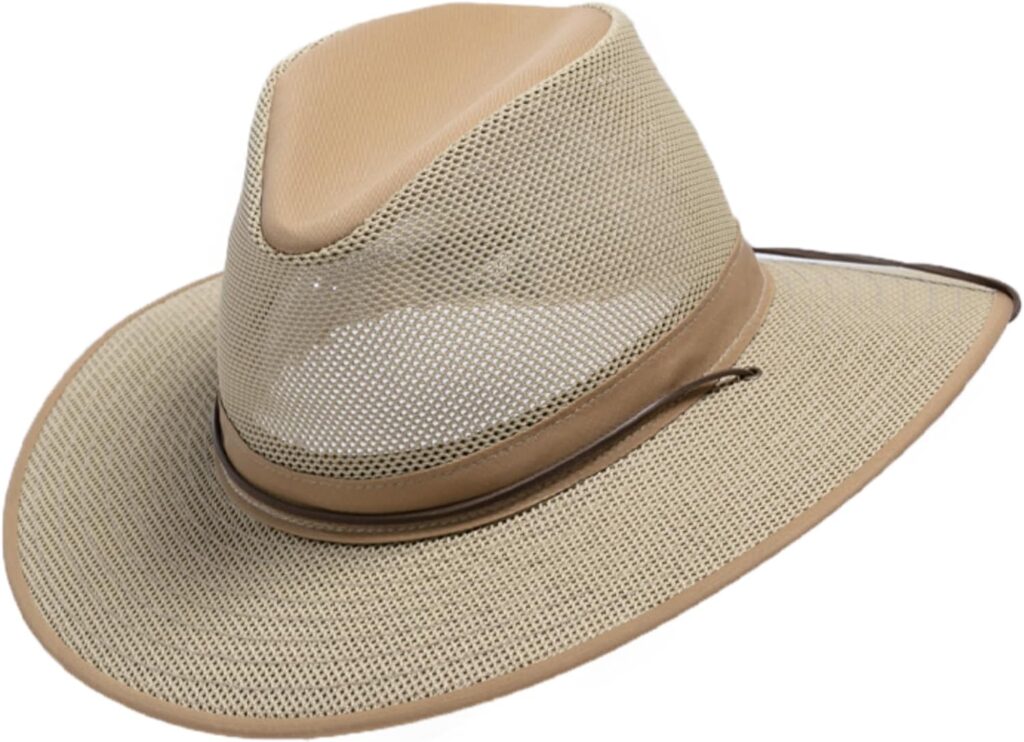
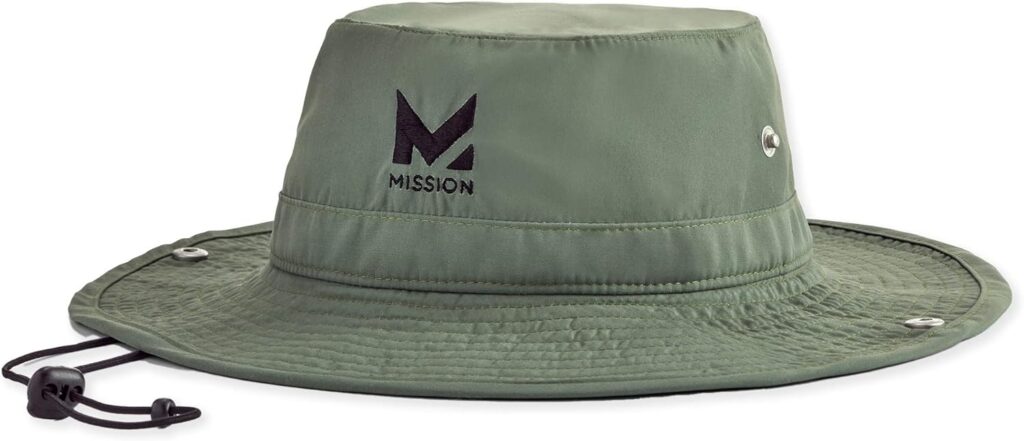
2. MISSION Cooling Bucket Hat
- Pros:
- Instant cooling technology activates in 3 easy steps and lasts up to 2 hours.
- UPF 50 fabric provides excellent sun protection for face, ears, and neck.
- Foldable and travel-friendly, making it easy to pack.
- Chemical-free cooling fabric, reusable and machine washable.
- Adjustable chin strap for a secure fit in windy conditions.
- Cons:
- Cooling feature requires water activation, which might not be practical in all situations.
- Some users may find the cooling effect less effective in extremely humid conditions.
3. Women’s Summer Sun Hat
- Pros:
- Breathable fabric with quick-drying polyester, perfect for summer.
- UPF 50+ rating offers superior sun protection.
- Features a ponytail hole, catering to those with long hair.
- Adjustable chin strap and hat circumference for a customizable fit.
- Foldable and packable, maintaining shape for easy travel.
- Cons:
- One size fits most may not accommodate all head sizes comfortably.
- Button closure might not be as durable as other types.
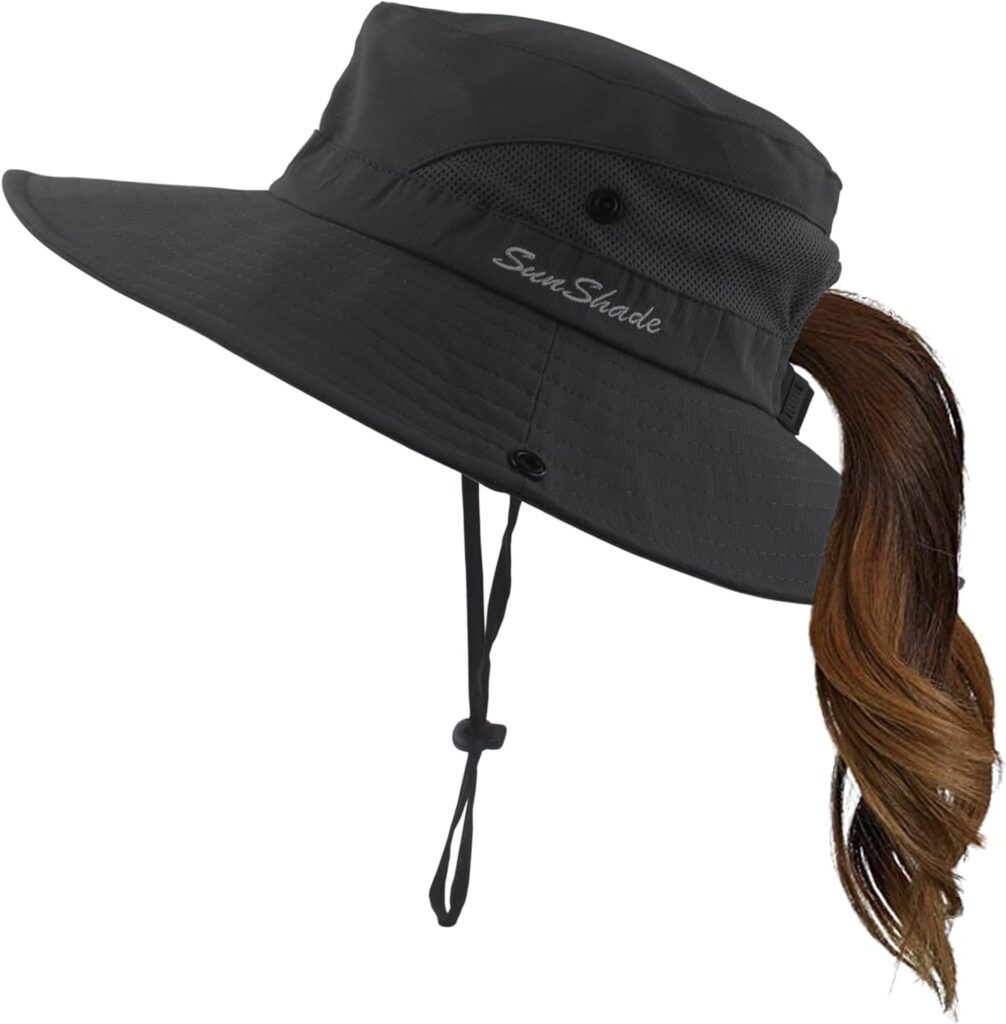
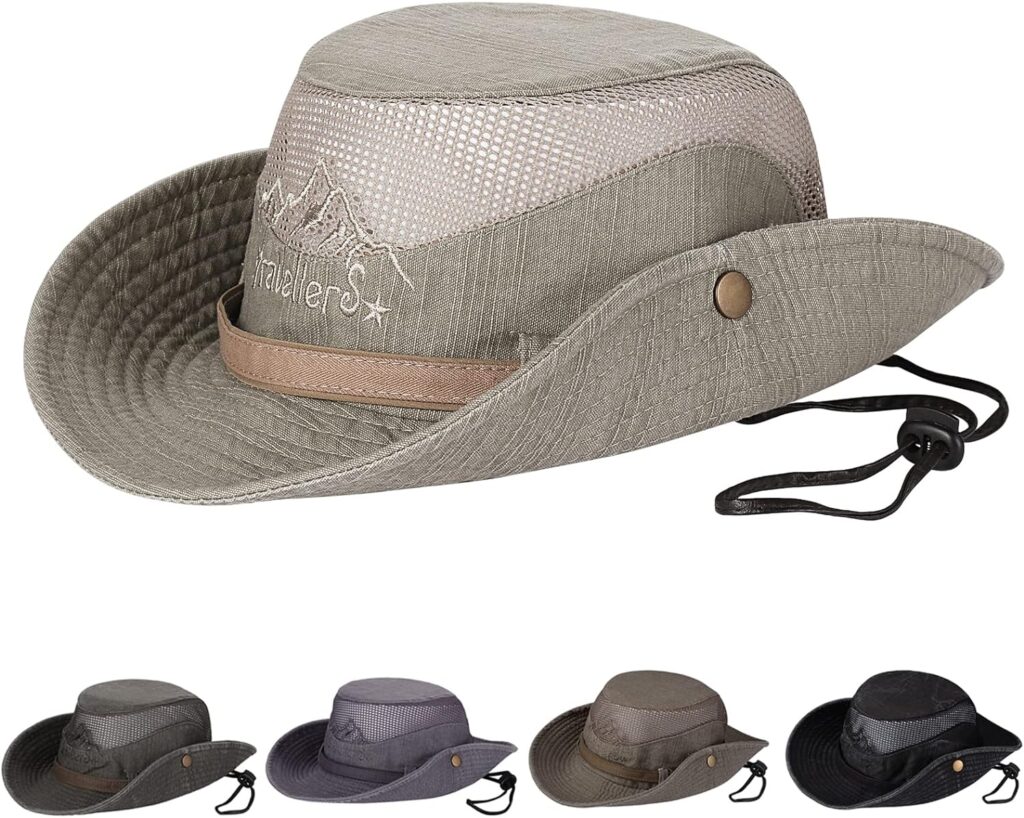
4. Obling Sun Hat
- Pros:
- Wide brim and UPF 50+ rating provide excellent sun protection.
- Breathable design with mesh panels for increased ventilation.
- Adjustable chin strap ensures the hat stays on in windy conditions.
- Foldable, making it convenient for travel and storage.
- Suitable for a wide range of activities and both men and women.
- Cons:
- Made from 100% cotton, which can absorb moisture and take longer to dry.
- Rear adjustable drawstring might not offer the most secure fit for all head sizes.
5. Rosoz Ponytail Sun Bucket Hats for Women
- Pros:
- Unique ponytail hole design accommodates different hairstyles.
- Adjustable hook and loop back for a custom fit.
- Offers UPF30+ sun protection.
- Wide variety of color options.
- Promises customer satisfaction with a refund or free replacement guarantee.
- Cons:
- Fabric blend might not be as breathable as 100% polyester or nylon options.
- UPF30+ rating is lower than some other hats offering UPF50+ protection.
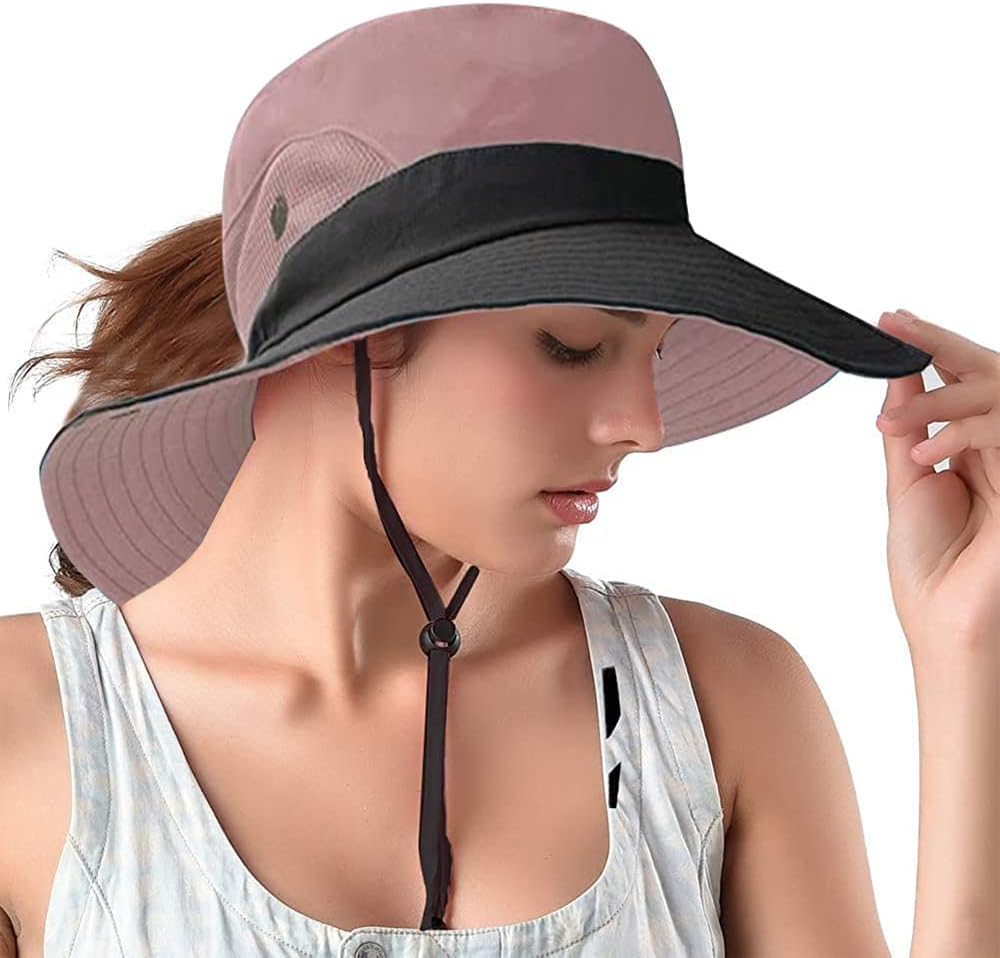
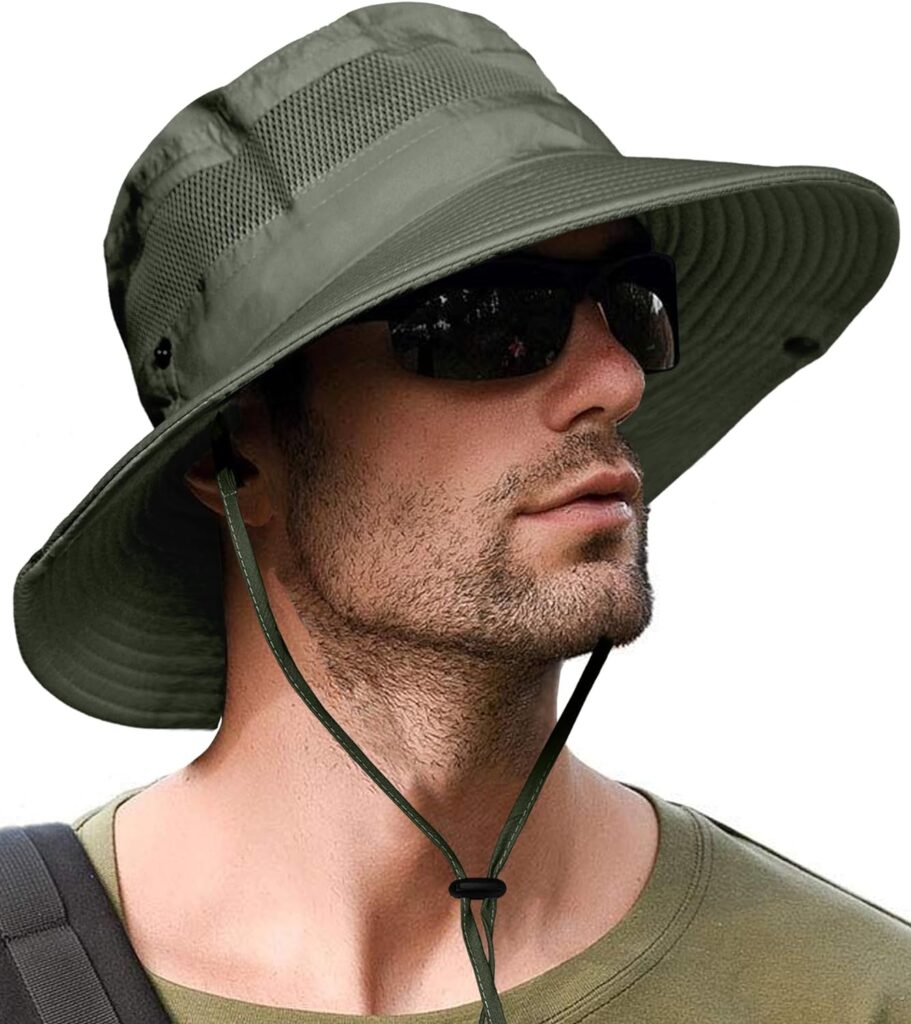
6. GearTOP Fishing Hat UPF 50+ Wide Brim Sun Hat
- Pros:
- UPF 50+ protection shields against harmful UVA/UVB rays.
- Breathable with mesh vents for cooling.
- Adjustable chin strap and toggle for a perfect fit.
- Packable and lightweight, easy to carry.
- Machine washable for easy cleaning.
- Cons:
- Some users might prefer a hat without synthetic materials.
- The drawstring closure may not appeal to everyone.
7. Columbia Unisex Bora Bora Booney Fishing Hat
- Pros:
- Omni-Shade technology blocks UVA and UVB rays with UPF 50 sun protection.
- Omni-Wick technology for superior moisture management.
- Features an adjustable drawcord and toggle at the back.
- Durable construction with Columbia’s quality materials.
- Breathable with a mesh vent panel.
- Cons:
- One size fits all may not suit everyone perfectly.
- Style and design might not appeal to all fashion preferences.
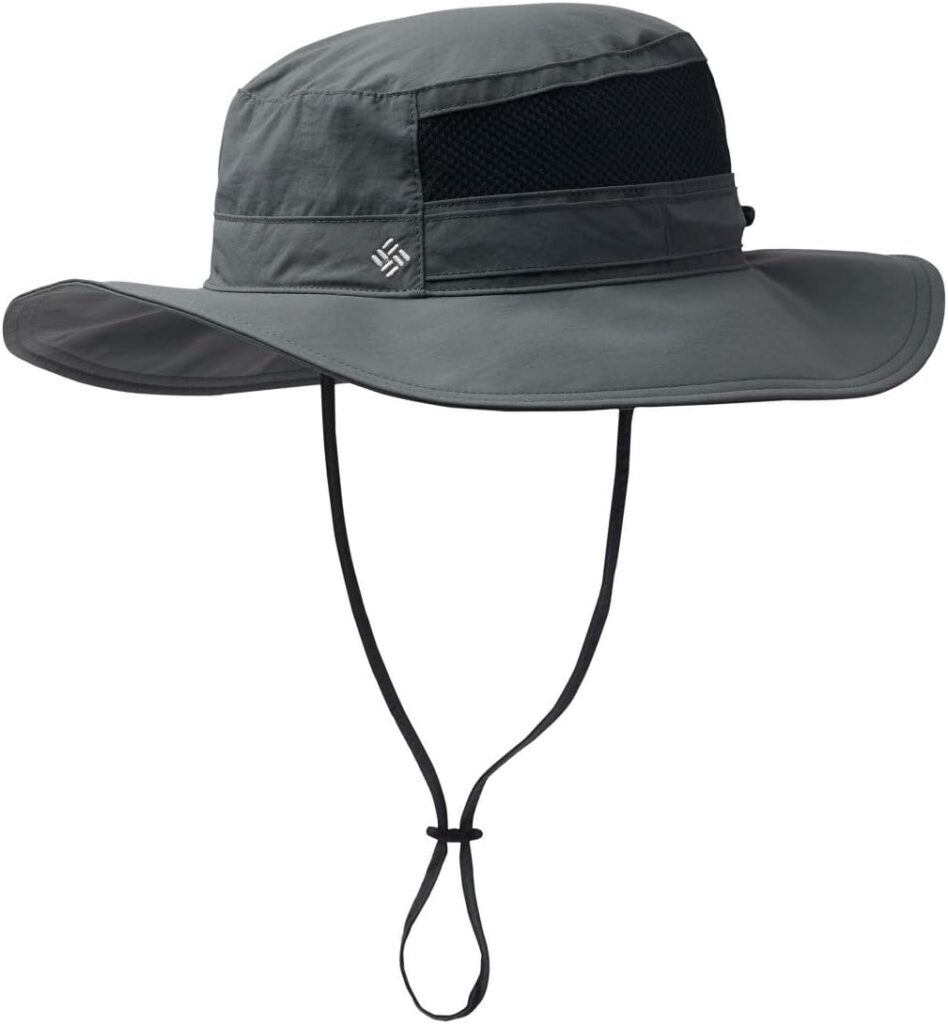
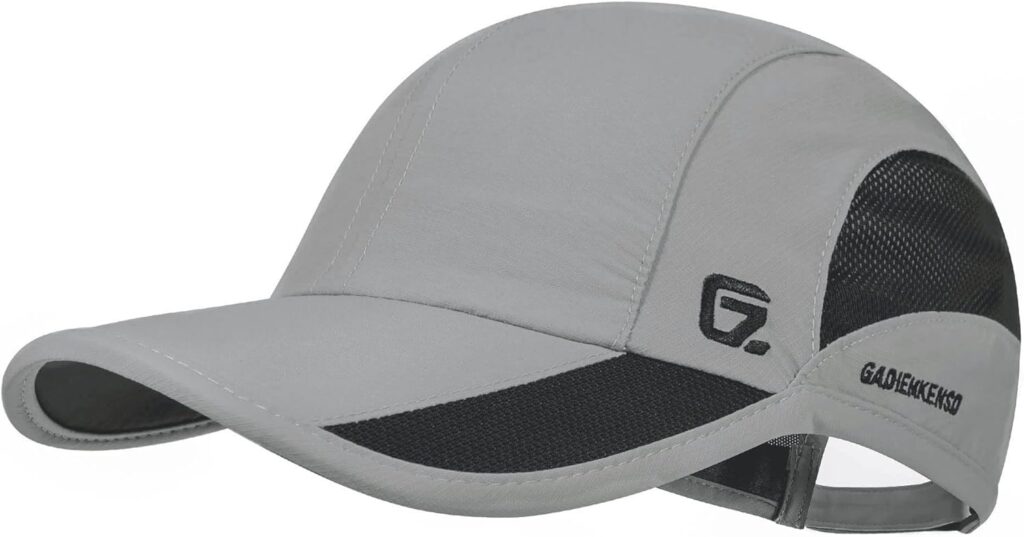
8. GADIEMKENSD Quick Dry Run Hat Cooling Breathable Mesh
- Pros:
- Made of soft and durable nylon fabric with a UPF 50+ rating.
- Quick-drying and breathable material with mesh vents.
- Stretch comfort adjustable sizing for a perfect fit.
- Lightweight and unstructured for easy packing.
- Versatile for use across seasons and various outdoor activities.
- Cons:
- The specific fit may not accommodate all head sizes despite the adjustable feature.
- Mesh vents are not rated for UPF protection.
9. GearTOP Fishing Hat UPF 50+ Wide Brim Sun Hat (Beige)
- Pros:
- Offers excellent UPF 50+ sun protection.
- Equipped with mesh vents for breathability.
- Adjustable for a comfortable and secure fit.
- Foldable and lightweight, making it ideal for travel.
- Comes with a satisfaction guarantee.
- Cons:
- Similar to the Army Green version, preferences for material and closure type might vary.
- Beige color may show dirt more easily than darker options.
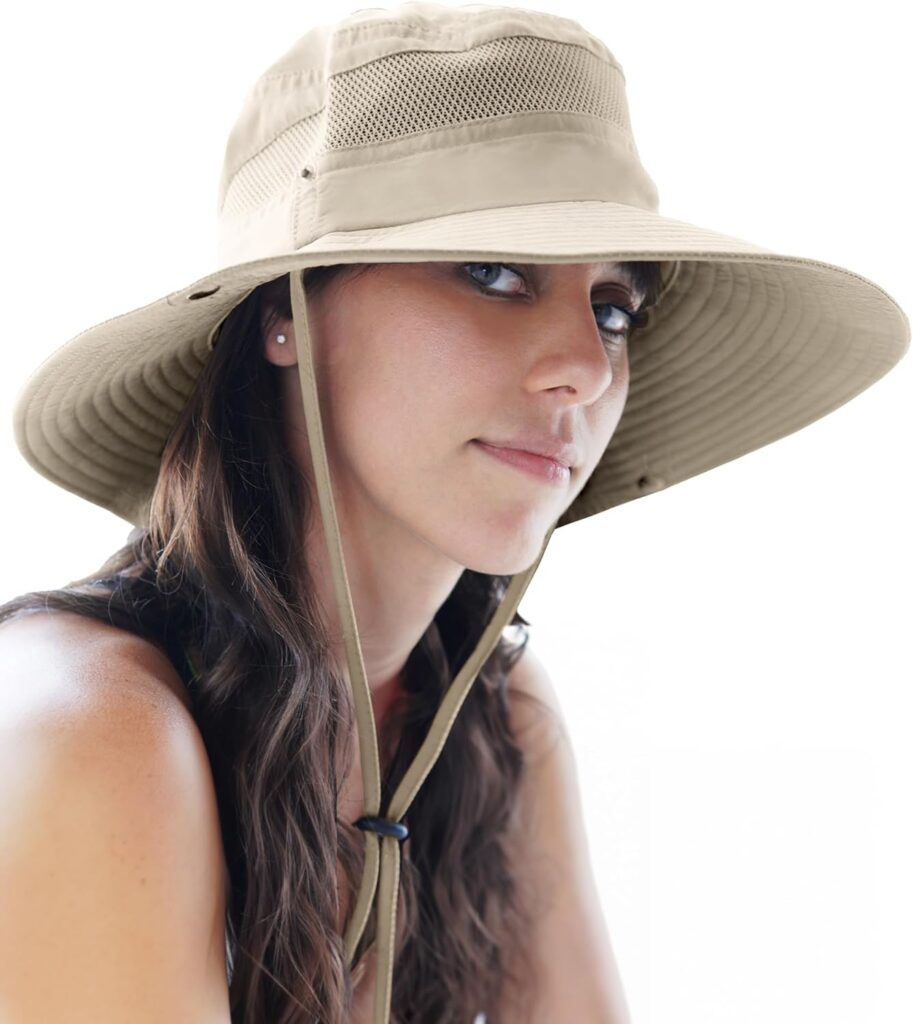
Caring for Your Hiking Hat: Ensuring Longevity and Performance
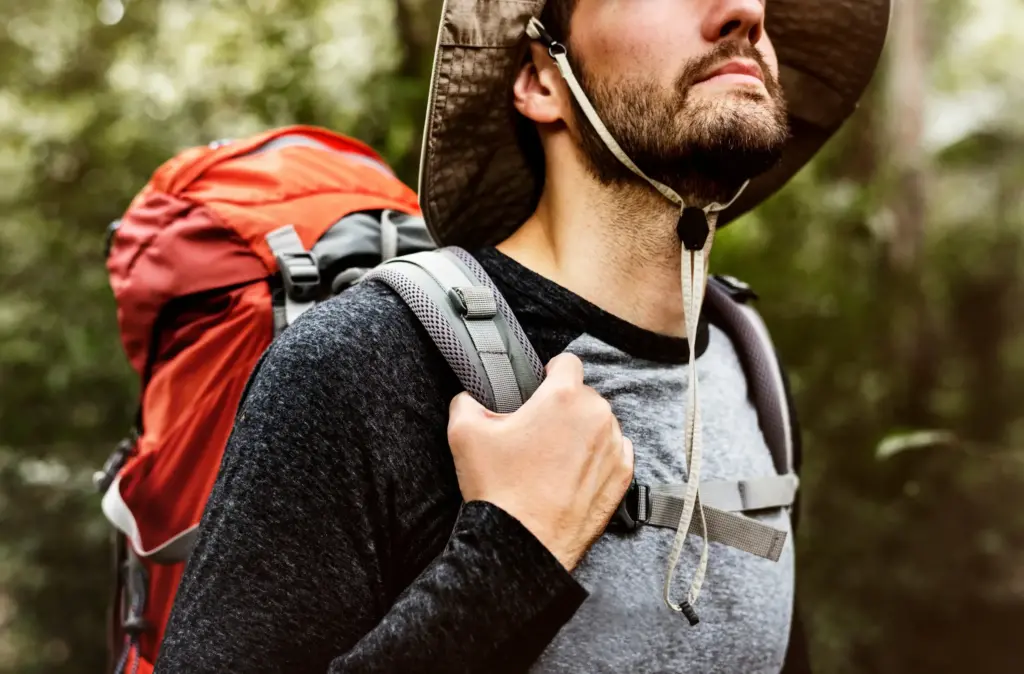
Maintaining your hiking hat is crucial for extending its lifespan and ensuring it remains effective in protecting you from the elements. Proper care involves appropriate storage, regular cleaning, and periodic weatherproofing. Here’s how to keep your hiking hat in prime condition, ensuring it’s always ready for your next adventure.
Storing Your Hiking Hat
- Cool, Dry Places: Always store your hat in an environment that is cool and dry to prevent mold and mildew buildup, which can damage the fabric and compromise the hat’s structure.
- Maintaining Shape: Avoid placing heavy items on top of your hat, as this can deform its shape. Wide-brimmed hats benefit from being stored on a hat stand or peg to preserve their form.
- Avoid Direct Sunlight: Long-term exposure to direct sunlight can fade the color and weaken the fabric. When not in use, keep your hat in a shaded location.
Cleaning Your Hiking Hat
Proper cleaning is essential for removing dirt, sweat, and bacteria that can accumulate during hikes.
- Check the Care Label: Before cleaning, always refer to the hat’s care instructions. Some hats are machine washable, while others require hand washing to maintain their integrity.
- Hand Washing Steps:
- Fill a basin with lukewarm water and add a mild, gentle detergent.
- Submerge the hat and gently agitate the water to distribute the soap.
- Let the hat soak for a few minutes, then gently swirl it to loosen any dirt.
- Rinse thoroughly with clean, lukewarm water until all soap residue is gone.
- Carefully pat the hat dry with a clean towel to remove excess water. Reshape the hat as needed and let it air dry completely in a well-ventilated area away from direct heat and sunlight.
Weatherproofing Your Hiking Hat
To enhance your hat’s durability and functionality, especially in challenging weather conditions, consider applying a weatherproofing treatment.
- Choosing the Right Product: Select a weatherproofing spray or treatment that is appropriate for the material of your hat. Products are available for both natural and synthetic fabrics.
- Application: Follow the product instructions for application. Typically, this involves cleaning the hat first, then applying the spray evenly over the surface while the hat is dry.
- Testing: It’s wise to test the product on a small, inconspicuous area of the hat to ensure it doesn’t alter the color or texture of the material.
- Reapplication: Depending on the frequency of use and exposure to harsh conditions, reapply the weatherproofing treatment periodically to maintain the hat’s water-resistance and durability.
Conclusion
Choosing the perfect hiking hat is more than just a fashion statement; it’s about comfort, protection, and enhancing your overall hiking experience. Remember, the right hat will not only protect you from the elements but also make your hikes more enjoyable. So, the next time you hit the trails, make sure you’ve got your trusty hiking hat with you!
FAQs
- Why do I need a hiking hat when I can use a regular cap?
Regular caps may not offer the UV protection, breathability, or coverage a hiking hat provides. - How often should I replace my hiking hat?
Depending on its wear and tear and how often you hike, but generally, a good-quality hat can last several years. - Can I wash my hiking hat in a machine?
Always check the manufacturer’s guidelines. Some hats are machine-washable, while others are not. - Is there a one-size-fits-all hiking hat?
Most hiking hats come in various sizes, but many offer adjustable straps for a custom fit. - Do hiking hats come with additional features?
Yes, some come with features like bug nets, chin straps, or even pockets!
Remember, your adventures deserve the best gear, so choose wisely and hike on!
Resources
https://travel.usnews.com/rankings/best-hiking-trips-in-north-america/




